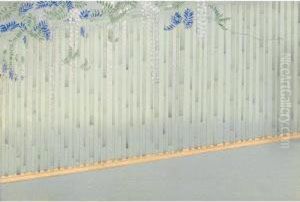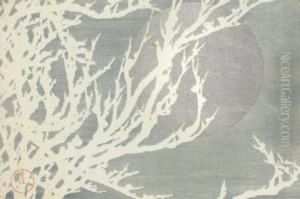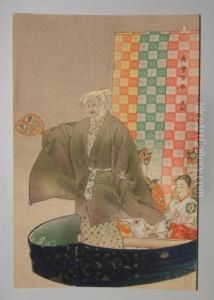Kamisaka Sekka Paintings
Kamisaka Sekka was a prominent Japanese artist and designer, particularly known for his role in the development and modernization of Rinpa school of Japanese painting. Born in Kyoto in 1866, Sekka grew up during the Meiji period, a time when Japan was rapidly modernizing and opening up to Western influences after centuries of relative isolation under the Tokugawa shogunate.
Sekka's work is characterized by a blend of traditional Japanese aesthetics with modern elements, often incorporating themes and techniques from Western art. He was particularly interested in preserving and revitalizing traditional Japanese artistic practices, especially those of the Rinpa school, which is known for its bold, decorative style and use of bright colors. Rinpa typically features themes from nature, classical literature, and poetry, often with an emphasis on stylized forms and the use of gold and silver leaf.
During his career, Sekka worked across a variety of mediums, including painting, lacquerware, ceramics, and textile design. His designs were not only popular in Japan but also gained recognition at international expositions, helping to influence the Art Nouveau and Japonisme movements in Europe and America. Sekka also played a significant role as an educator, teaching at the Kyoto City School of Arts and Crafts, where he influenced a new generation of Japanese artists and designers.
Sekka's work has left a lasting legacy in the world of Japanese art. His modern interpretations of classic themes and innovative approach to design continue to be celebrated. He passed away in 1942, leaving behind a body of work that continues to be studied and admired for its unique blend of traditional Japanese aesthetics and modern sensibility.




